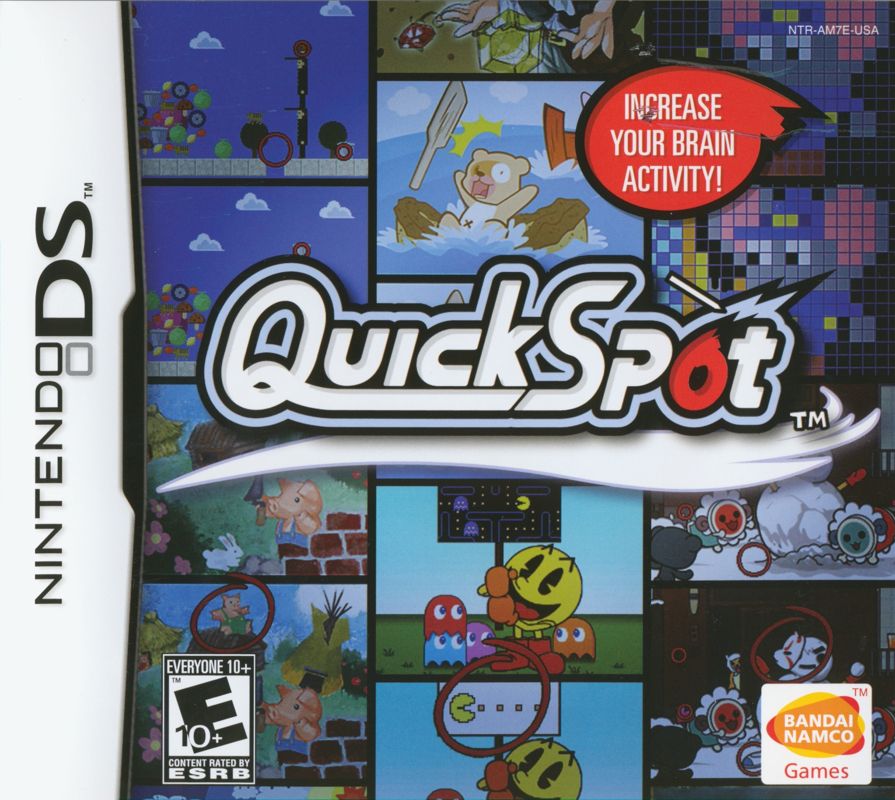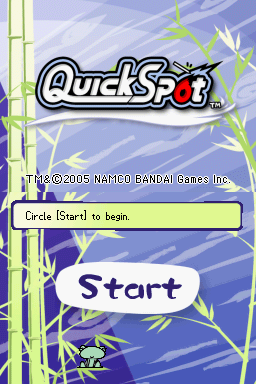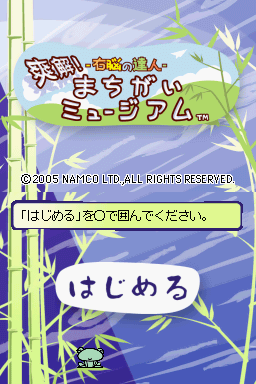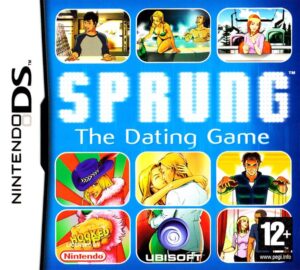Retro Replay Review
Gameplay
QuickSpot on the Nintendo DS takes the classic “spot the difference” concept and transforms it into a dynamic handheld experience. With dual screens displaying two near-identical images, players use the stylus to circle discrepancies as quickly and accurately as possible. The tactile feedback of the touchscreen makes each correct find satisfying, while occasional mis-taps keep you on your toes and encourage precision over speed.
(HEY YOU!! We hope you enjoy! We try not to run ads. So basically, this is a very expensive hobby running this site. Please consider joining us for updates, forums, and more. Network w/ us to make some cash or friends while retro gaming, and you can win some free retro games for posting. Okay, carry on 👍)
The game offers three distinct single-player modes to suit different playstyles. Rapid Play throws you into a race against the clock to spot one difference across 10 successive images, testing your reflexes and visual acuity. Focus Play, by contrast, removes the time pressure entirely, challenging you to find 10 differences per image at your own pace—ideal for players who prefer a more relaxed, methodical approach.
Adding a whimsical twist, Today’s Fortune mode mixes puzzle-solving with light fortune-telling. You’re presented with five images, each containing two possible differences; the one you choose reveals a daily fortune related to health, work, romance, or money. This mode encourages daily playthroughs, as you’ll be curious to see what lucky insights await based on your selections.
Multiplayer extends QuickSpot’s appeal beyond solo challenges. In Time Bomb, up to eight players pass a single DS unit around, frantically circling differences before an on-screen timer “explodes”—a frantic exercise in pressure and hand-offs. For head-to-head competition, Scramble pits up to four players (via single- or multi-card play) in a contest to see who can find the lone discrepancy the fastest.
Across all modes, the learning curve is gentle: newcomers can immediately pick up the stylus and start circling, while seasoned spot-the-difference fans will appreciate the progressively trickier images and tighter time limits. Whether you’re aiming to beat your personal best in Rapid Play or challenging friends in Scramble, QuickSpot’s gameplay loop remains engaging over repeated sessions.
Graphics
Visually, QuickSpot embraces bright, colorful artwork that’s both inviting and easy on the eyes. The dual-screen setup allows each picture to occupy its own space, ensuring you have a clear, unobstructed view of both images. The artwork spans various themes—from bustling cityscapes to cozy interiors—providing enough variety to keep the visual experience fresh.
Each image is rendered with crisp detail, making differences stand out once you train your eyes. Small touches, like subtle shading changes or tiny object additions, are thoughtfully designed to offer just enough challenge without feeling unfair. The smooth animations when you successfully circle a difference (or when penalties flash for mistakes) keep the action feeling responsive and polished.
The DS hardware is used effectively: the touchscreen registration is accurate, and there’s virtually no lag between stylus input and on-screen response. Background music and sound effects are minimal but functional, providing gentle motivational dings for correct finds and buzzy warnings as time runs out—enough to create atmosphere without overwhelming the visuals.
While QuickSpot isn’t pushing the graphical boundaries of the DS, it’s perfectly suited for its puzzle-focused gameplay. The art style remains consistent throughout, and the interface is intuitive—menus are straightforward, and mode selections are visually distinct so you never feel lost navigating the options.
Overall, the graphics strike a balance between clarity and charm, ensuring that both casual players and competitive spotters can appreciate the visual design without frustration. The emphasis remains squarely on spotting differences rather than on flashy effects, and QuickSpot succeeds in delivering clean, attractive imagery that enhances the core gameplay.
Story
QuickSpot is, at its heart, a puzzle game, so it doesn’t weave a traditional narrative or storyline. There are no characters to follow, no plot twists, and no world to explore beyond the pictures on your screens. Instead, the game’s “story” unfolds through its modes—each shot at finding differences becomes its own little narrative of challenge, discovery, and reward.
That said, Today’s Fortune mode introduces a playful, pseudo-story element. Each difference you select reveals a short fortune—words of encouragement or humorous predictions about your health, work, romance, or finances. While these fortunes don’t drive a cohesive plot, they add a lighthearted personal touch that can feel like a daily ritual or brief glimpse into a quirky narrative universe.
The multiplayer modes create emergent stories through competitive play. The frantic tension of passing around a Time Bomb DS, or the victorious cheers when you’re the fastest in Scramble, generate memorable moments and friendly rivalries. In this way, QuickSpot crafts its own social narrative, one defined by shared experiences and spontaneous reactions rather than scripted events.
In essence, if you’re looking for a deep storyline or character-driven adventure, QuickSpot isn’t designed to satisfy that craving. Instead, its “story” is your journey as a player—improving your speed in Rapid Play, mastering the art of focus in Focus Play, or eagerly anticipating your next fortune. Each session offers its own mini-arc of challenge, concentration, and completion.
QuickSpot’s narrative structure—or intentional lack thereof—is in service of pure puzzle fun. The absence of a traditional story keeps the spotlight on the gameplay, ensuring that each image comparison you make is the main event and every circled difference feels meaningful in its own right.
Overall Experience
QuickSpot delivers a compelling package for fans of visual puzzles and casual gamers alike. Its varied modes ensure that both quick pick-up-and-play sessions and longer puzzle marathons feel equally rewarding. The mix of timed challenges, leisurely searches, and daily fortune-telling keeps the gameplay loop engaging over weeks or even months.
The multiplayer options enhance the title’s replay value significantly. Gathering friends or family for a round of Time Bomb can turn any living room into a high-energy hotspot, while Scramble’s competitive edge is perfect for brief tournaments or friendly one-on-one showdowns. The ease of passing a single DS around or connecting multiple systems means you’re never far from your next group challenge.
Priced appropriately for a puzzle-centric DS title, QuickSpot offers excellent value. It strikes a satisfying balance: simple to understand yet challenging enough to foster mastery. The strong touchscreen responsiveness and clear, attractive visuals reinforce a seamless experience from start to finish.
While the lack of a deep story might disappoint those seeking narrative-driven content, QuickSpot’s focus on its core mechanic is commendable. If you enjoy sharpening your observational skills and appreciate a game that can be as relaxed or as intense as you like, QuickSpot hits the mark. It’s a title you can return to day after day, whether you have a minute or an hour to spare.
In the end, QuickSpot stands out as a polished, enjoyable puzzle game that takes full advantage of the Nintendo DS’s touch capabilities. Its straightforward design, coupled with enough variety in modes and difficulty, makes it an excellent addition to any handheld library—especially for those who love spotting the smallest of differences under any conditions.
 Retro Replay Retro Replay gaming reviews, news, emulation, geek stuff and more!
Retro Replay Retro Replay gaming reviews, news, emulation, geek stuff and more!






Reviews
There are no reviews yet.